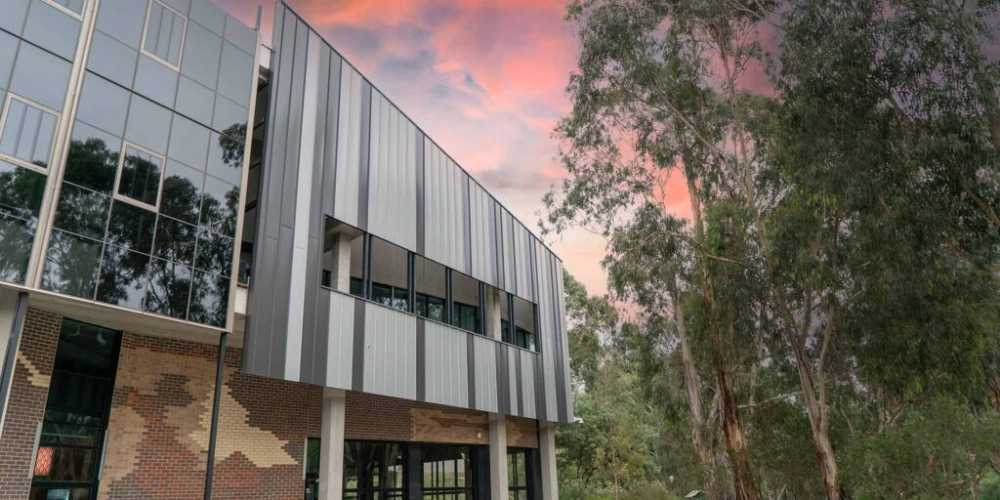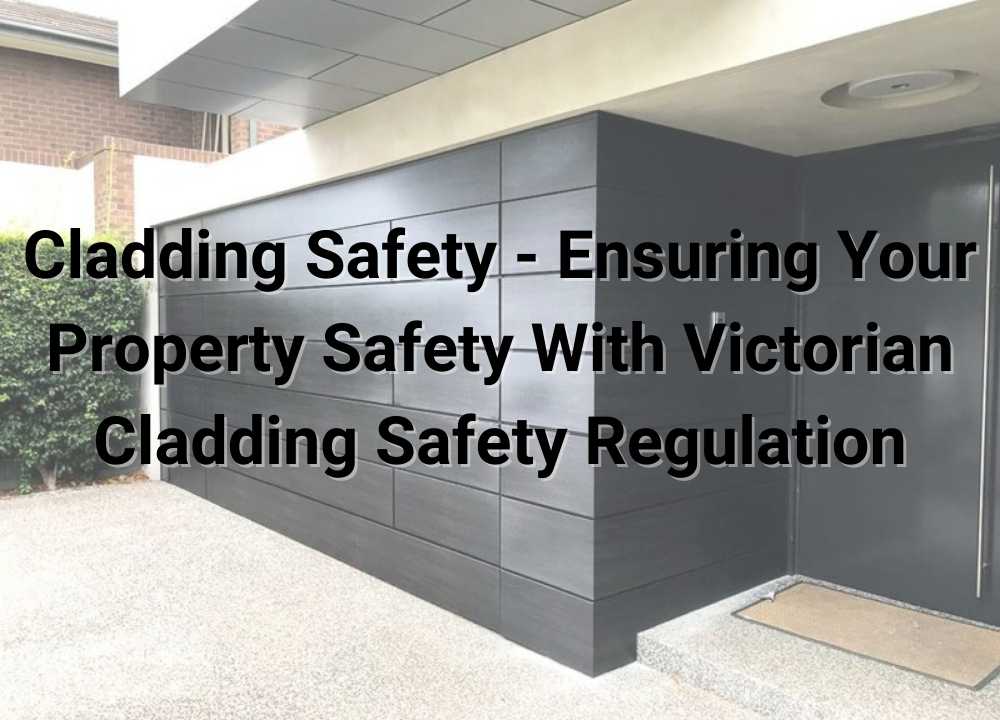Cladding Safety - Ensuring Your Property Safety With Victorian Cladding Safety Regulation
A cladding system is a vital part of the building process and should not be taken lightly. With so many variables to consider in designing, erecting and maintaining your new building, it is easy to neglect safety concerns at every stage.
The Victorian Cladding Safety Regulations are a set of guidelines that regulate the safety of cladding and facade materials used in buildings. The regulations were first introduced by the Victorian Building Authority in 2010 and have been revised three times since then. These revisions include updates on fire-resistant cladding systems, new requirements for timber cladding products, and aluminium composite panels (ACPs).
When choosing the right kind of cladding for your home, think about all the things that are, or could be, included, such as insulation or windows that can be opened. You should realise just how much impact your choice has on the health and safety of everyone in your home. This article is a guide that will help you understand cladding safety for your home in line with Victorian cladding safety regulations.
In This Article
What is Victorian Cladding Safety Regulation

Victorian Cladding Safety Regulation (VCSR) is a set of standards and guidelines that cover the safety of all exterior cladding materials used on buildings in Victoria. It was made under the Building Act 1996 and regulated cladding installation and other materials on buildings. The Regulations require that all cladding installations be carried out following the Standards for Cladding Installation.
The VCSR provides a single set of rules which apply to all types of external cladding work. Cladding safety regulations are designed to protect people from fire and the effects of smoke. They establish minimum requirements for the materials and methods used in the construction of buildings, including their exterior cladding systems.
This legislation aims to ensure that people are safe when working with concrete, masonry products, metalwork and ornamental finishes such as painting or staining on buildings constructed using these materials.
Cladding Safety Victoria is a worldwide initiative by the Victorian government. As mentioned on their website, the $600 million initiative seeks to make Victorians safer by lowering the risk posed by flammable cladding on residential apartment complexes and publicly owned structures.
They collaborate with building owners and owners’ companies to resolve issues with non-compliant or non-conforming exterior wall cladding materials. They achieve this by offering assistance, direction, and introductions to duly licenced and competent practitioners.
Importance of Victorian Cladding Safety Regulations
The Victorian Cladding Safety Regulations are a law that was introduced to ensure the safety of people who live in buildings with cladding.
The primary purpose of these regulations is to reduce the fire risk caused by faulty cladding. They also apply to new buildings being built or refurbished, so they can be used as an example for other countries that may want to implement similar laws.
Victorian cladding safety regulations are a legal requirement. They are also a community responsibility, as they apply to your property and other properties in the same area.
Cladding safety is a financial responsibility because it costs money to replace damaged cladding. And it’s a significant health and safety issue, too. If you don’t have proper ventilation or no fire escape routes, people could be at risk of injury if there’s a fire or explosion on site.
Dangers of Cladding You Should Be Aware of
Cladding safety depends on the type of cladding, the installation method and the location. The following are some dangers you should be aware of:
Fire Safety
The cladding will also start burning if there is a fire inside your home. This means that if smoke or flames comes out from one part of the house, they could spread quickly to other parts, too, if you don’t get them under control quickly enough. You may only see signs of fire once you open up your windows and smell smoke or see flames coming out from somewhere in your home.
Health Hazard
Another danger of using combustible materials in your home is a health hazard. This can be dangerous because these materials release toxic gases when they burn or catch fire. These gases can be harmful to all humans, especially those who have breathing problems or asthma, because they will be exposed to them inside their homes or on their way back from work. This also means that children and pets may suffer from these fumes when exposed.
Moisture Damage
Many people must realise that specific cladding can only be suitable for the environment if they’re adequately recycled or replaced with eco-friendly options like bamboo or straw bale.
Eco-friendliness
Moisture is another big concern with cladding since it can cause mould issues within your home. Mould can spread quickly if there is moisture inside your walls or ceilings. It’s essential to keep your walls and ceilings dry to avoid mould growth inside your home.
Structural integrity
Cladding comes in many different types and thicknesses. If you’re careful, the wrong type may succeed during an earthquake or other natural disaster, causing severe damage to your home or business.
Corrosion Risk
Cladding materials are often made from metals such as zinc or aluminium. These metals corrode quickly, especially if they come into contact with water (such as rainwater). This can lead to corrosion problems inside your home and cause damage to electrical cables and fittings, which can cause fires and other safety hazards.
How To Ensure Safety in Using Cladding According to Victorian Cladding Safety Regulations
The Victorian Cladding Safety Regulation is a set of rules that aim to ensure the safety of houses and buildings during construction. The Victorian government developed it in collaboration with building industry groups and other stakeholders such as architects.
According to Victorian Cladding Safety Regulations, the following are required:
- Check your building plans against the Victorian Cladding Safety Regulations before you start any work on your property.
- Ensure all personnel working on your scaffolding have appropriate personal protective equipment (PPE).
- A building owner/manager must ensure a safe work environment for employees and contractors to carry out their duties.
- Ensure that your building is constructed using high-quality materials and manufactured using state-of-the-art technology, which meets the highest safety standards.
- Go through a thorough process of testing your new cladding system before it is installed on your building facade or wall.
- The building owner/manager must ensure that no hazardous materials are stored there.
- The building owner/manager must ensure that all workers have been given safety equipment, including goggles, gloves, and other appropriate protective equipment as specified by the employer.
- Ensure all work areas are clear of all potential hazards before work commences.
Frequently Asked Questions
Cladding Safety Victoria will contact owners’ companies to encourage participation in the initiative if they are qualified. To qualify for financing, an owner’s company must be in charge of a residential structure with greater risk and flammable cladding.
The EWS1 form will indicate whether your building has dangerous cladding by writing B1 or B2 next to it. B1 denotes that the danger isn’t substantial enough to warrant corrective action. B2 denotes that safety improvements must be made to the cladding. If your building is taller than 11 metres, the government will cover the cost of removing any dangerous cladding.
Your building owner will be liable for paying all expenses associated with the cladding rehabilitation if you have a qualifying lease and reside in a relevant building with a hazardous cladding system. Any costs associated with repairing or changing dangerous cladding systems won’t be passed to you.
If your project requires resource permission and you begin work without one or violate the terms of your building consent, you are breaking the law. The consequences include up to $200,000 in fines and the removal of your completed work.
Key Takeaways
There are many things to consider regarding safety issues with your property cladding. With so much information available, knowing where to start or where the best place is for you regarding safety issues and regulations can be challenging.
Suppose you’re a homeowner or contractor with a home improvement focus. In that case, avoiding the safety issues surrounding laminates and cladding products is hard. The requirements for cladding safety are relatively strict compared to other building materials, resulting in many products to choose from.

